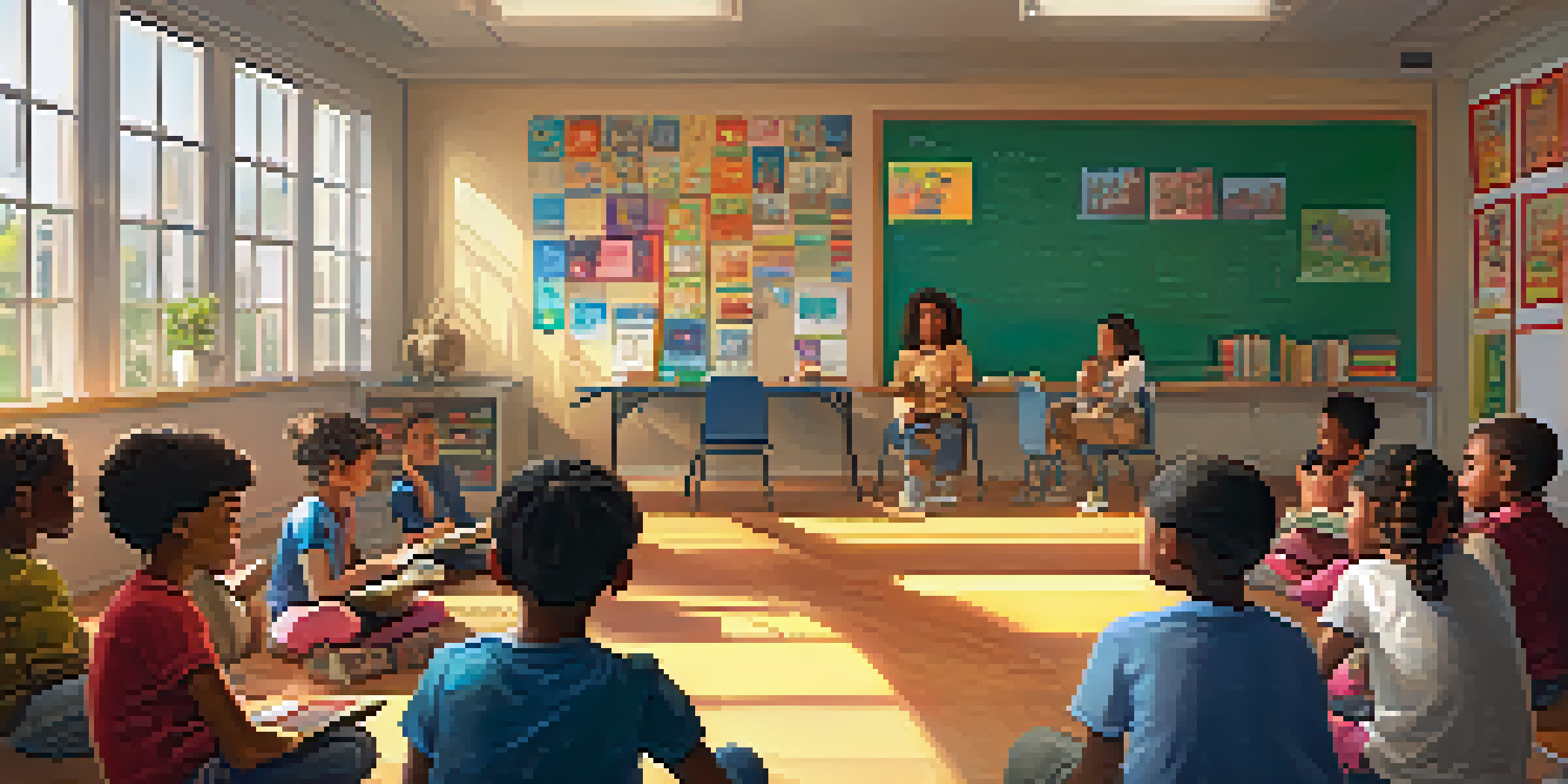The Role of Storytelling in Constructivist Learning

Understanding Constructivist Learning Theory
Constructivist learning theory emphasizes that individuals build their own understanding of the world through experiences. This approach values the learner's active role in the educational process, as opposed to passively receiving information. By engaging with their environment and reflecting on their experiences, learners create meaningful connections that enhance retention and understanding.
The Power of Storytelling in Education
Storytelling serves as a powerful educational tool that can captivate learners and facilitate deeper comprehension. When students hear a story, they become emotionally involved, which helps them connect with the material on a personal level. This emotional engagement can lead to improved memory retention and a greater ability to apply knowledge in real-life situations.
Constructivism Enhances Learning
Learners actively build their understanding through experiences, making education more meaningful and memorable.
How Stories Foster Critical Thinking Skills
By presenting complex scenarios and dilemmas, storytelling encourages learners to think critically about the choices characters make. This reflection prompts students to analyze situations, consider multiple perspectives, and develop their reasoning skills. As they engage with the narrative, learners practice problem-solving, which is a cornerstone of constructivist learning.
Creating a Collaborative Learning Environment
Storytelling naturally invites collaboration among learners, as they often share their interpretations and insights. This sharing not only enriches the learning experience but also fosters a sense of community within the classroom. When students collaborate on storytelling, they learn to communicate effectively and appreciate diverse viewpoints, enhancing their social learning skills.
Storytelling Boosts Engagement
Emotional involvement in stories helps students connect personally with material, improving retention and real-life application.
Incorporating Personal Narratives in Learning
By inviting students to share their personal stories, educators can create a more inclusive and relatable learning environment. Personal narratives encourage learners to reflect on their experiences and connect them with academic concepts. This not only validates their unique perspectives but also promotes a deeper understanding of the subject matter.
Using Digital Storytelling in the Classroom
Digital storytelling combines technology with traditional storytelling, offering new avenues for creativity and engagement. Students can use multimedia tools to create their own stories, allowing them to express their understanding in innovative ways. This approach not only enhances digital literacy but also fosters a sense of ownership over their learning.
Collaboration Through Story Sharing
Sharing personal narratives and stories fosters collaboration and appreciation for diverse perspectives among learners.
Barriers to Effective Storytelling in Learning
Despite its benefits, there are challenges to implementing storytelling in educational settings. Some educators may feel unprepared or lack confidence in their storytelling abilities. Additionally, time constraints and curriculum demands can limit opportunities for storytelling, making it essential for educators to find a balance that incorporates this valuable method.
The Future of Storytelling in Education
As education continues to evolve, the role of storytelling is likely to grow even more significant. With advances in technology and a greater emphasis on personalized learning, storytelling can adapt to meet the diverse needs of students. By embracing storytelling, educators can create more engaging and effective learning experiences that foster critical thinking and collaboration.